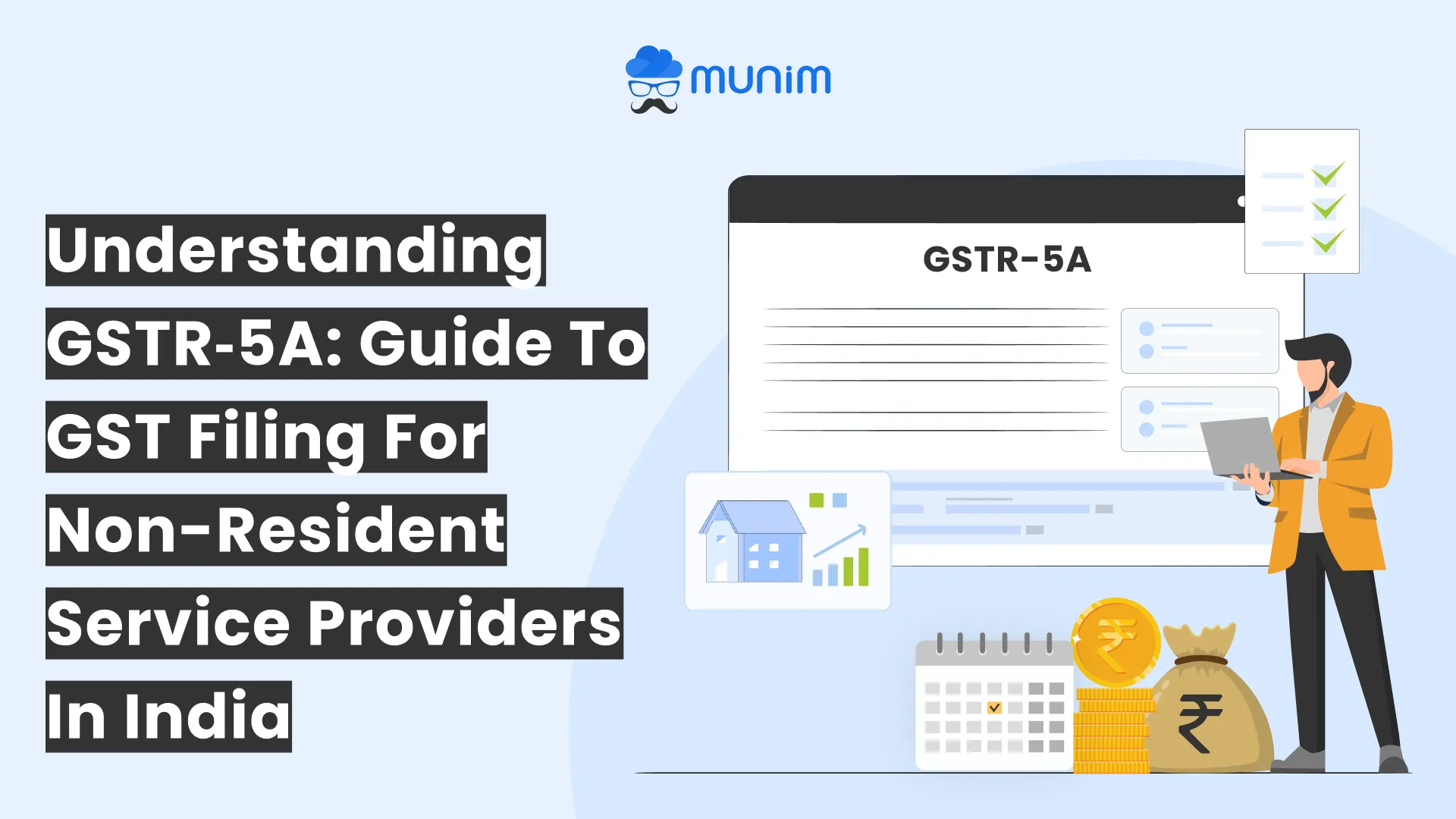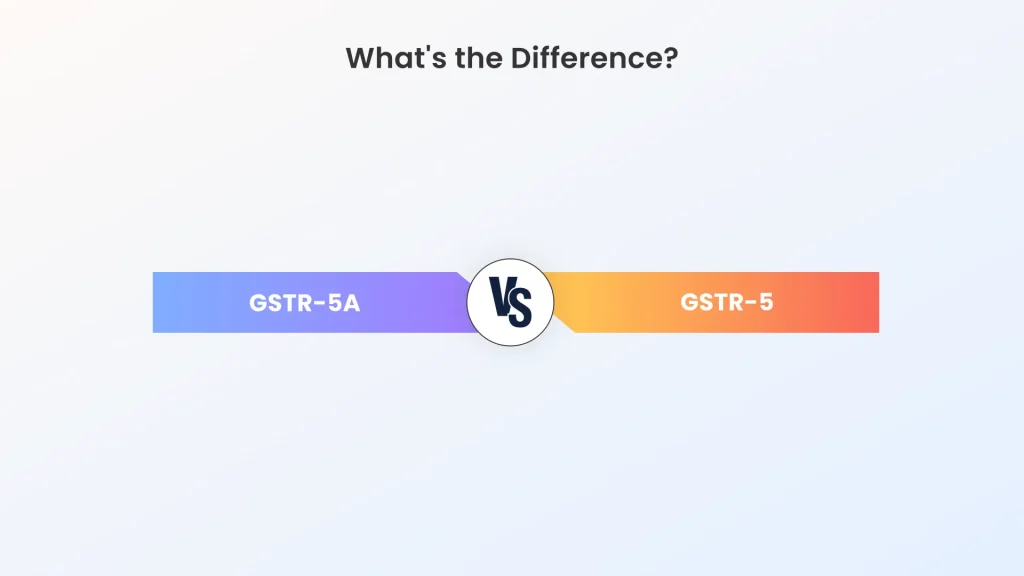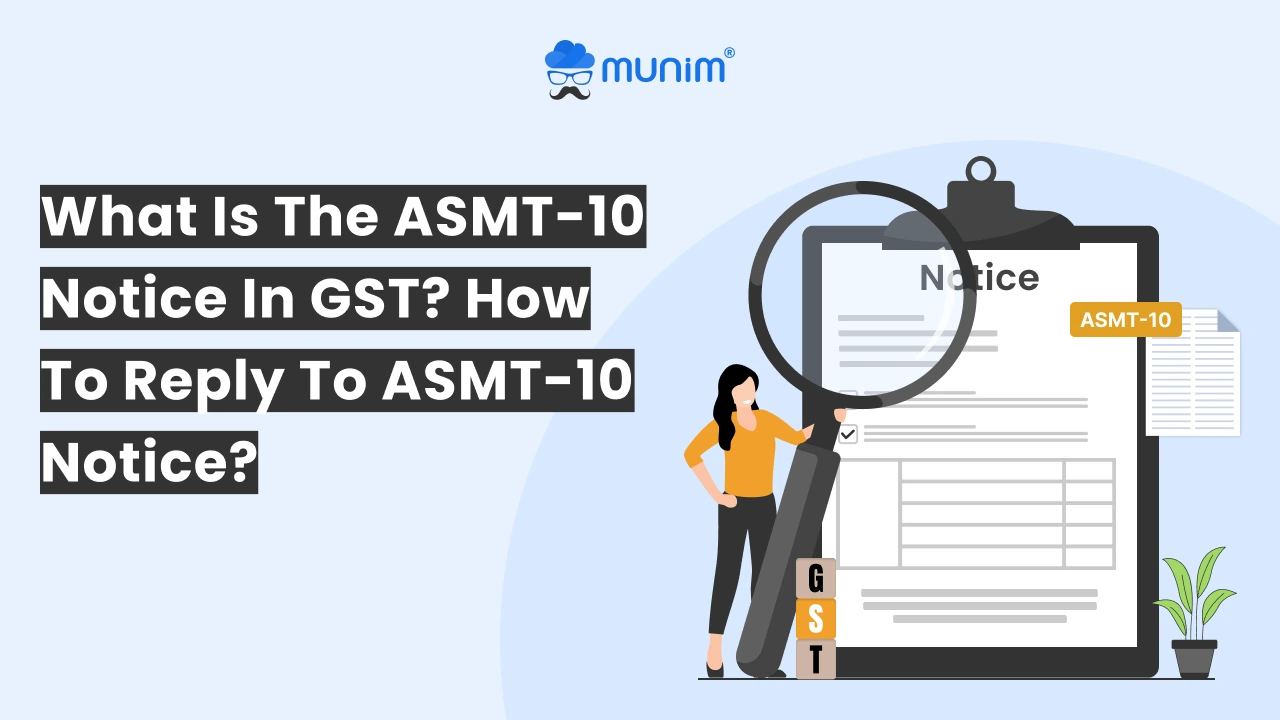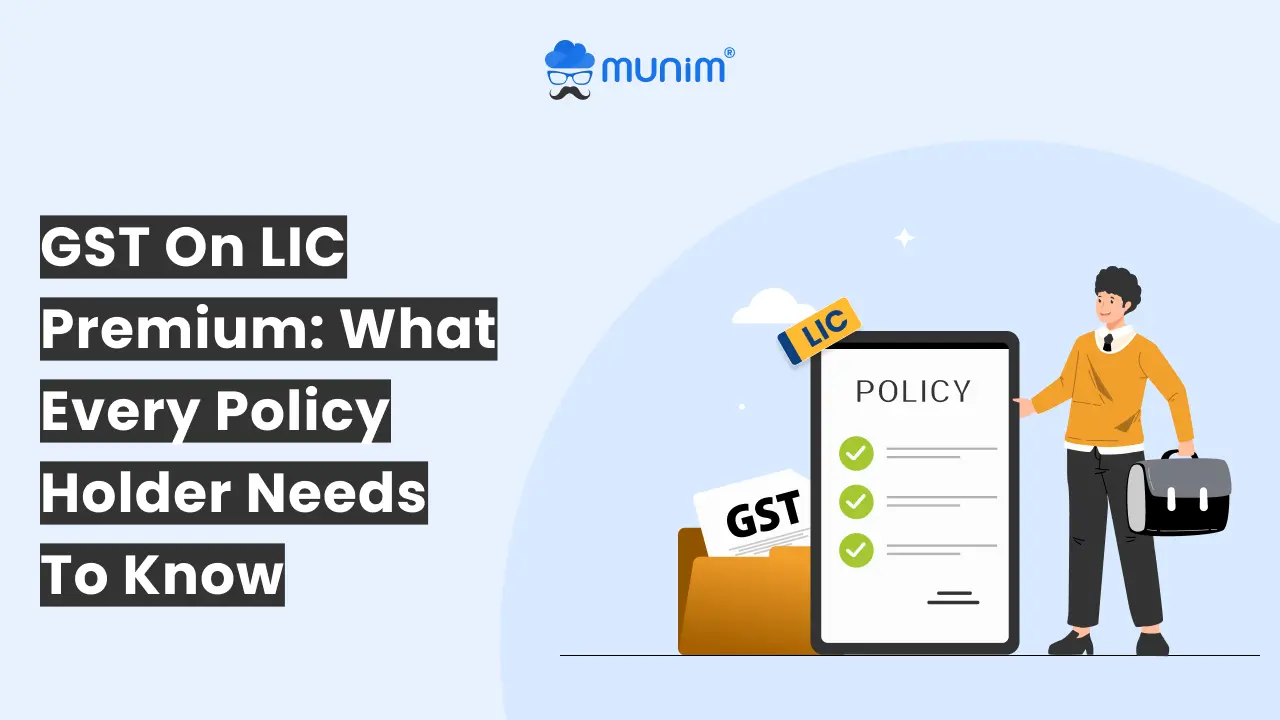GSTR‑5A: GST Filing for Non-Resident Service Providers in India

Being a non-resident of India, if you are coming across GST forms for the first time and getting confused with them, don’t worry, you are not alone. As a freelancer who provides digital services to the Indian market and operates outside of the country, or as a multinational company that sells its services to Indian customers, GSTR-5A is an important GST return that you should file to continue serving the Indian customers.
In this blog, we will walk you through everything you need to know about GSTR-5A, its due dates, and how it is different from GSTR-5.
What is GSTR-5A?
GSTR–5A is a monthly return form, which is specific to non-resident Online Information and Database Access or Retrieval (OIDAR) service providers. These are companies or individuals who are situated outside India, but they provide IT-based services such as streaming platforms, cloud services or online subscriptions to Indian consumers without any physical presence in India. Consider Netflix, Google Cloud, or even a freelance graphic designer in the UK selling digital templates to Indian consumers.
The GSTR-5A form makes sure that you report all of your taxable supplies to consumers in India and pay the appropriate GST. Unlike any other GSTR for non-residents, it caters to non-residents who do not have a fixed place of business in India. Hope it makes sense?
In case you are offering services online to unregistered clients (those who do not have a GSTIN), then you are obliged to file GSTR-5A. And yes, even when you had no transactions in a particular month, you are still required to file a Nil return.
Let’s understand with a real-world example,
Suppose you are a developer in Canada with a website that sells e-books to Indian customers. Your system enables users to download books directly, and the majority of your customers are not businesses. As you are supplying OIDAR services to unregistered individuals, you will have to file GSTR-5A on a monthly basis, which will give details about the total amount of e-books sold and GST payable.
Key Points About GSTR-5A:
- It is compulsory for non-resident entities that provide goods or services in India.
- The monthly filing of the return should be done.
- This return contains details such as taxable supplies, imports, and transactions that involve exports.
Format of GSTR-5A: What Should You Include in GSTR-5A?
If you are filling GSTR-5A, you will be asked to provide the following information:
- GSTIN (Goods and Services Tax Identification Number): This is the number given to you under GST.
- Outward Supplies: This would comprise all the sales or supplies that are made in India for the given tax period.
- Tax Paid: Report the GST you have paid on these supplies.
- Imports and Exports: All cross-border transactions have to be recorded in this return.
Every section mentioned in this form is essential in maintaining proper records of the business activities to stay compliant in India.
GSTR-5A vs. GSTR-5: What’s the Difference?

At this point, you may be asking: Why is there a different form called GSTR-5A when we already have GSTR-5? What is the difference? Great question! Both GSTR-5 and GSTR-5A are forms to be filled by non-residents; however, they have different purposes. To eliminate any confusion, let us simplify it by comparing it.
GSTR-5: This is the form that is to be filled by non-resident taxable persons (NRTPs) that temporarily engage in business in India, such as selling goods or offering services within a limited time (not more than 90 days). Consider a foreign supplier who has established a booth in a trade show in Bangalore or a consultant going to India on a project. Their inward and outward supplies, including imports, sales, and purchases, are captured in GSTR-5. It is slightly more inclusive as it deals with goods and services.
GSTR-5A: It is more limited. It is only available to non-resident OIDAR service providers who provide digital services to Indian consumers. GSTR-5A is your form of choice in case your business is purely online and you are dealing with unregistered customers (such as individuals or non-GST registered parties). It is concerned with the outward supplies that are to be taxed.
GSTR-5A Filing Date
GSTR-5A is to be filed on or before the 20th of the next month. As an example, the due date of GSTR-5A for the month of July would be the 20th of August.
Sometimes the due date can be extended due to technical reasons, so it is necessary to keep yourself updated with official notifications. Failure to meet the deadline may result in penalties or even interest on late GST return filing.
Late Fees For Filing GSTR-5A in Case of a Delay
Due to whatever reason, if the GSTR-5A returns filing gets delayed, the following late fees are applicable:
- Nil return: ₹100 Per Day
- Regular return: ₹200 Per Day
Final Notes
Being a non-resident taxable person, it may appear that filing GSTR-5A is a very difficult task, yet it is necessary for your business. Be it digital services or any other taxable supplies, your business will be safe from penalties and legal issues when you are in compliance with India’s tax laws.
Do you want to file your GSTR 5A this month? In case you are not sure whether you will be able to file GSTR-5A correctly or not, it’s better to subscribe to a GST return filing software like Munim GST Return Filing software. It will make the task much easier for you.
Frequently Asked Questions
Who needs to file GSTR-5A?
Non-resident taxable persons (NRTPs) providing services such as digital content, online databases or any other comparable services in India should submit GSTR-5A irrespective of their having a permanent establishment in India.
How do I file GSTR-5A?
You can file GSTR-5A either directly from the GST Portal or through a trusted GST return filing software like Munim GST Return Filing.
Read More on GST Returns
Types of GST Returns | GSTR-2A | GSTR-9 | GSTR-9A | GSTR-9C | GSTR-3B | GSTR-8 | GSTR-7 |






